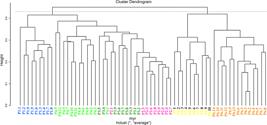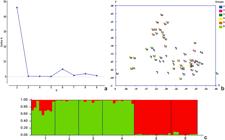Abstract
The investigation of genetic diversity in natural populations of species that show potential for use in reforestation programs is a key step in making management decisions. However, reforestation programs with native species in Brazil are still rarely based on a genetic understanding of the seed matrices used for seedling production. This is also the case for Myrsine umbellata, a dioecious shrub within the family Primulaceae that has been used in reforestation programs in Brazil, mainly due to its high production capacity of fruits attractive to the avifauna. The goal of this study was to measure intra- and interpopulational genetic diversity in natural populations of M. umbellata in six forest remnants of the Atlantic Forest using ISSR markers. The results revealed that the intrapopulational genetic diversity was greater than the genetic diversity among the studied populations. For this reason, the cultivation of seedlings from seeds obtained in more than one population seems the most appropriate strategy for reforestation purposes. Even though the most isolated populations are also the ones with highest genetic structure, all populations of M. umbellata included in this study revealed to be an important germplasm bank conserved in situ.
Key words:
Capororoca; ISSR markers; Myrsinoideae; tropical forests

 Thumbnail
Thumbnail
 Thumbnail
Thumbnail
 Thumbnail
Thumbnail


